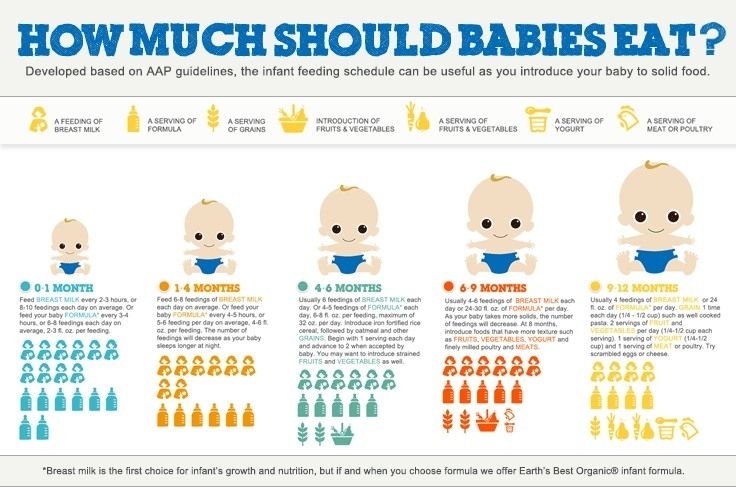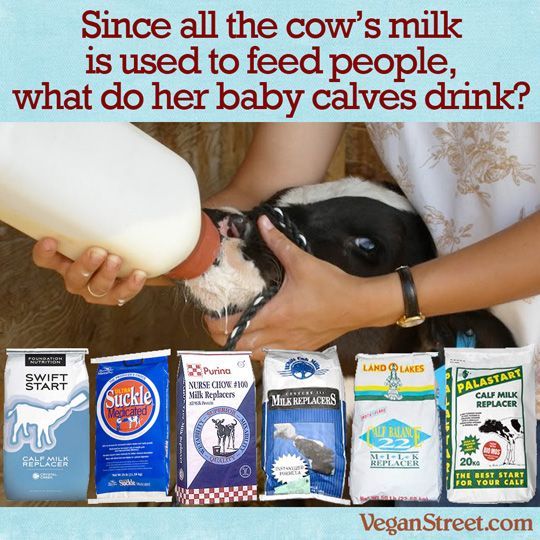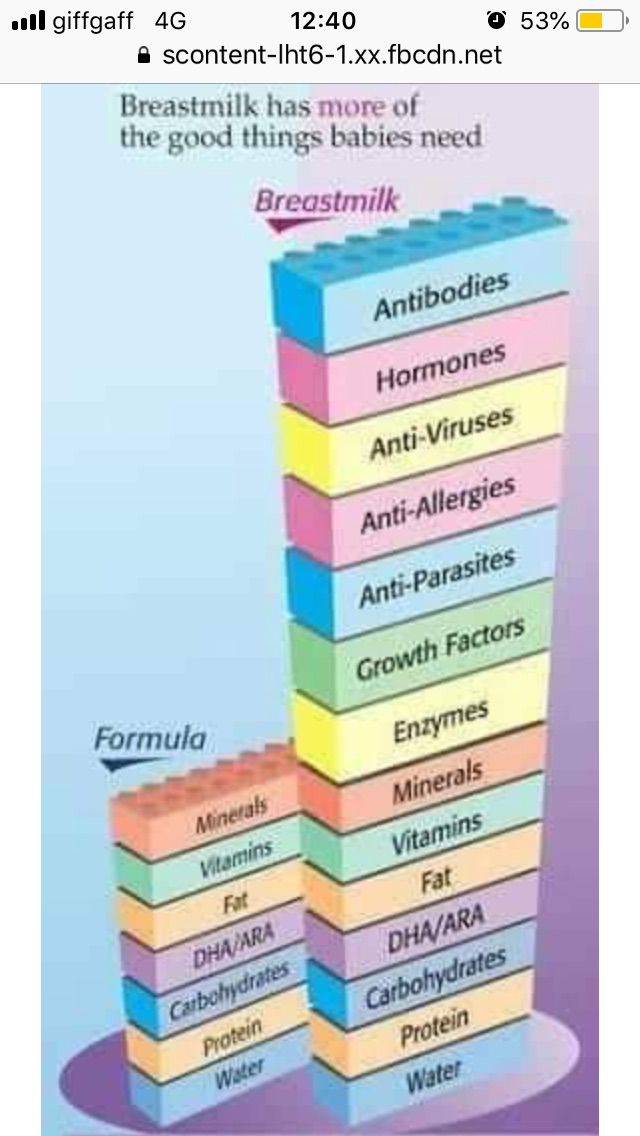What to feed baby instead of formula
What Should I Feed My Baby if I Can’t Find Baby Formula in Stores? (for Parents)
en español: ¿Qué debo hacer si no puedo encontrar fórmula para bebés en las tiendas?
Reviewed by: Elana Pearl Ben-Joseph, MD
I’ve noticed that my supermarket is running out of baby formula, and I’ve heard that there is a nationwide shortage. My baby is too young to start solids. What should I do if I can’t find formula?
– Stella
There is indeed a national shortage of baby formula in the United States. The COVID-19 pandemic created supply chain and staffing issues, and a recent recall of baby formula due to contaminated products from a key factory added to the problem.
Here are some tips on how to deal with the baby formula shortage:
- Talk to your baby’s doctor. They might have sample cans of formula available and also can ask the manufacturer for specific types of formula. You can also call a local hospital, office of WIC (the federal Special Supplemental Nutrition Program for Women, Infants, and Children), or an established breast milk bank.
Women’s shelters, food banks, and faith-based organizations also might be able to help. Avoid using breast milk from friends, community members, or online sources. These donations may not have been properly stored or pasteurized and can contain germs or other harmful substances.
- Shop around. Try other stores that you may not have gone to in the past, especially smaller independent grocery stores, pharmacies, or baby supply stores. They might not run out of formula as quickly as bigger stores.
- Order online if you can. Make sure that the websites are well-recognized companies and not auction sites or online marketplaces that can’t guarantee safe products.
- Switch to any available formula. This should be OK for most babies unless they are on a specific type of formula for medical reasons. Store-brand formulas are less expensive. Check with your baby’s doctor if you are not sure about making a switch.
- Connect with other parents (in person or on social media groups).
 They might have extra formula or ideas about where to get some.
They might have extra formula or ideas about where to get some. - Do not give your baby:
- homemade formula. This can be dangerous and has even led to infant deaths.
- watered-down formula to make it last longer. This is dangerous, as it reduces the amount of nutrients in each bottle. Always follow instructions on the package or recommendations from your baby’s doctor.
- goat milk or plant-based milks (like almond, rice, coconut, or oat milks) if your baby is younger than 1 year old. These milks lack the nutrients your baby needs for growth and development.
NOTE: Cow’s milk usually is only recommended for babies after their first birthday. In an emergency, though, babies 6 months of age and older who do not get a specific type of formula for medical reasons can drink cow's milk, but for no longer than a week and not more than 24 ounces per day. Cow’s milk does not contain enough iron for a growing baby. So, if you give your baby cow’s milk, also offer iron-containing solid foods or iron supplements. Soy milk also may be OK for a few days for babies who are close to 1 year old, as long as it is fortified with protein and calcium.
So, if you give your baby cow’s milk, also offer iron-containing solid foods or iron supplements. Soy milk also may be OK for a few days for babies who are close to 1 year old, as long as it is fortified with protein and calcium. - formula you bought overseas. Foreign products are not regulated by the U.S. Food and Drug Administration (FDA) and may not be safe. For this reason, goat milk formula is not an option for babies younger than 1 year old because infant-appropriate goat milk formulas are all made overseas.
- toddler formula. If your baby is nearing their first birthday, though, toddler formula can be OK for a few days.
If you run out of formula and can’t find any, in a pinch you can give oral rehydration solution (such as Pedialyte, Enfalyte, or a store brand) for a couple of days. Babies older than 4 to 6 months can also get puréed (finely ground) foods. And remember that babies older than 1 year do not need to drink formula at all — most of their foods can be eaten as solids and they can drink milk or water.
More information is available online at:
- U.S. Department of Health & Human Services
Reviewed by: Elana Pearl Ben-Joseph, MD
Date reviewed: May 2022
Share:
Five Baby Formula Alternatives You Should Consider for Your Child – Formuland
What if you could provide even better nutrition for your baby?
Many parents rely on baby formula to feed their young children. And while this formula has its benefits, there are alternatives that may be better for your child’s growth and development.
Wondering what the best baby formula alternatives are? Keep reading to discover the answer!
Why Try Baby Formula Alternatives?
Our guide is going to help you discover the baby formula alternatives to help your child grow healthy and strong. Before we go any further, though, it’s worth answering another major question: why should parents seek out a better baby formula in the first place?
Before we go any further, though, it’s worth answering another major question: why should parents seek out a better baby formula in the first place?
The most direct answer is that when it comes to babies, there is no “one size fits all” when it comes to formula. Traditional baby formula was designed as an alternative to breast milk, but this formula was originally invented way back in 1867. Simply put, there have been many advancements since then, and alternatives to this traditional formula can offer better flavor and better nutrition for your child.
This is especially important if your child doesn’t like the current baby formula you have selected. By exploring some of the alternatives to formula, you may discover a taste that your baby loves. And if this great taste also provides better nutrition, then parents and children alike are going to sleep easier at night.
What You Should Know About Alternatives to Baby Formula
Below, we have a breakdown of some of the best alternatives to traditional baby formula. Before you try them out, though, there are a few things you need to know about these alternatives.
Before you try them out, though, there are a few things you need to know about these alternatives.
The most important thing parents should be aware of is that you don’t necessarily have to choose between baby formula and one of the alternatives. Some of these alternatives may work well as a complete replacement for formula whereas others should be introduced at different stages as your baby grows older.
And like any dietary change for your baby, this may be a process of trial and error. Don’t be alarmed if you need to try out multiple alternatives to formula before you find one that your child really likes.
Finally, keep your pediatrician in the loop about any intended changes to your baby’s diet. The doctor can make recommendations based on your baby’s medical history that will keep your child safe and happy.
With that out of the way, let’s take a closer look at some of the best alternatives to baby formula.
1. Rice Milk
Rice milk has been increasing in popularity in recent years as an alternative to formula. But what is rice milk? This product is a combination of rice and water, and the mild flavor is unlikely to offend your baby’s palate.
But what is rice milk? This product is a combination of rice and water, and the mild flavor is unlikely to offend your baby’s palate.
On top of that, this milk is a great source of calcium that is also low on calories. So it can help develop your baby’s bones without adding a lot of unwanted weight.
And rice itself is a very popular product for eventually weaning babies off of milk or formula. If your baby enjoys rice milk now, you should consider offering products such as HiPP Organic Baby Rice to them in the future.
2. Coconut Milk
Every now and then, what’s good for the parent may be good for the child as well. Coconut milk is a great example of this idea. This dairy alternative has become increasingly popular among adults, and certain forms of this milk are great alternatives to baby formula.
If you are going to give your baby coconut milk, you need to get the kind that comes in a carton instead of a can. That is because the carton milk has a more diluted fat content that is safer for children (in fact, the fat content is very similar to cow’s milk).
You can also count on coconut milk as a great source of Vitamin A, Vitamin B, and iron. And it can boost your baby’s immune system during their most important developmental years.
3. Goat Milk
Remember when we said that certain alternatives were better for your child at different stages of their development? Well, goat milk is a baby formula alternative that is best used when you want to transition children away from using formula altogether.
Pasteurized goat milk is safe and contains more protein and other nutrients than cow milk, and all with less lactose. If you want to enjoy the best of both worlds, then you should offer your child a taste of this Goat Milk Formula and see what a difference it makes in their health and development!
4. Cow Milk Formula
You may have noticed many of our baby formula alternatives are also alternatives to cow’s milk. This is because that milk by itself does not work very well as an alternative to the traditional formula until your child is at least 12 months old.
However, you can make things a bit easier (and tastier) for your baby by offering them some of this Organic Cow Milk Formula. Made by Holle, you can trust the organic ingredients in this formula and the high quality of the milk used to make it.
If you are looking for a great alternative to breast milk, this may be your best bet!
Your Next Move
If you’re looking for baby formula alternatives, don’t settle for second best. Instead, put your trust in the formula experts!
Here at Formuland, we specialize in both baby formula and awesome alternatives. To see what we can do for your child, just contact us today!
What is better to give the baby after a year - milk or formula?
— Ekaterina Borisovna, feeding a child after a year is no less difficult task than feeding a newborn. Please tell us what a one-year-old child should normally eat and how does the diet of children after a year differ from the diet of their parents?
- The nutrition of a one-year-old child is already quite close to the common table. A child can receive almost the same set of products as an adult: only the method of preparation is different.
A child can receive almost the same set of products as an adult: only the method of preparation is different.
— What is better, milk or formula, for a baby after a year and in general, is it possible to feed a grown child with milk and formula? What diet is considered complete and allows you to completely abandon mother's milk?
- A diet is considered complete if it contains the minimum set of products required by age every day. By the year, all complementary foods should be introduced, the baby should receive meat or fish, sour-milk products daily. But do not rush with regular milk. When weaning after a year, the child should be offered a milk alternative in the form of a mixture of the following formula - such baby milk is easily digested and does not adversely affect children's digestion.
— Does it mean that baby milk will still be on the menu, or will a baby be able to get all the necessary substances from other products?
- Even with a fairly varied diet after a year, children still have a high need for an adequate ratio of incoming nutrients, including minerals and vitamins. So, a small child needs five times more iron than an adult. Its need for calcium and phosphorus is also high, but the allowed volume of cottage cheese is only 50 g per day, kefir - 200 g. Such volumes cannot make up for the children's norm per day.
So, a small child needs five times more iron than an adult. Its need for calcium and phosphorus is also high, but the allowed volume of cottage cheese is only 50 g per day, kefir - 200 g. Such volumes cannot make up for the children's norm per day.
In addition, for the normal development of the nervous system, a child needs a sufficient intake of polyunsaturated fatty acids per year, the main source of which can be vegetable oils. But the allowed daily norm of oil, for example, sunflower, will not close the child's need for essential fatty acids. For this reason, the usual set of products is not able to provide the growing children's body with everything they need.
- The psychological aspect of formula supplementation - is it true that a grown baby needs a bottle just to calm down?
- Formula is food and extra calories. Of course, the psychological dependence on the bottle for many babies is very high, they demand it at the first sign of anxiety or cannot fall asleep without their favorite treat at night. But it is a mistake to give the baby a bottle only as a means of sedation, as he once received his mother's breast - this is fraught with serious changes in eating behavior. The baby will begin to refuse full-fledged meals during the day, getting calories from the mixture.
But it is a mistake to give the baby a bottle only as a means of sedation, as he once received his mother's breast - this is fraught with serious changes in eating behavior. The baby will begin to refuse full-fledged meals during the day, getting calories from the mixture.
— Why can't we switch babies from breastfeeding to whole milk right away, and what are the consequences of this decision?
— Completion of breastfeeding is a difficult period in the life of a child and a mother. WHO does not recommend stopping breastfeeding immediately after one year, but if such a decision is nevertheless made, then parents should try to find an alternative. Whole milk does not meet the needs of a one-year-old baby due to a suboptimal ratio of nutrients. For these purposes, an adapted milk formula, designed for the physiological needs of the baby, is better suited.
Read also
- how much formula to feed a baby and how to combine formula and complementary foods
Why children under three cannot have milk
- The structure of milk protein is still too coarse for the delicate epithelium of the baby's digestive tract and difficult to be broken down by enzyme systems.

- Tolerance to cow's milk protein is formed more often only by the age of 3, and before this period, various allergic manifestations, dyspeptic disorders are possible in response to the introduction of milk into the diet.
- The content of calcium and phosphorus in whole milk exceeds the physiological need of the child. Excess calcium is excreted in the stool, often causing constipation. Phosphorus from milk, on the contrary, is absorbed in excess, which creates an additional burden on the urinary system. The kidneys intensively begin to remove excess phosphorus in combination with calcium already received. As a result, the level of calcium in the blood falls, and the baby does not receive the element that is so necessary for growth and development.
- Increased calcium content in milk reduces the absorption of iron, which provokes the risk of anemia.
It is not recommended to introduce whole milk to feed a child before two or even three years of age. If you want to try it, the recommended safe dose for a one-year-old child is about half a glass. At the age of two, it can be increased to one glass a day.
If you want to try it, the recommended safe dose for a one-year-old child is about half a glass. At the age of two, it can be increased to one glass a day.
— And what about cereals with milk? Is whole cow's and goat's milk suitable for making them?
— At home, it is possible to use whole milk for making cereals, cottage cheese, kefir or yogurt. Thermally processed and curdled protein is easier to digest and does not create additional burden on the digestive tract and kidneys.
If we compare cow's and goat's milk, then preference should be given to goat's.
- Goat milk fats are presented in small fat globules, which contributes to their easy digestion. Proteins in the stomach curdle and form a tender clot that is more easily digested by the child's immature digestive organs.
- Goat milk does not contain the protein alpha-S1-casein, which is often responsible for the development of food allergies.
- Goat milk contains less lactose for easier digestion and more B vitamins.

Therefore, goat's milk and dairy products based on it are more suitable for feeding a child after breastfeeding. Goat milk baby formula, which the child is used to, is perfect for breeding purchased cereals. You can also try to give your baby ready-made milk porridges with goat's milk.
— How to include a new dairy food in the baby's diet after breastfeeding is over — how much and at what time to feed the baby?
— A product unknown to the baby is always given little by little — half or one teaspoon, gradually bringing it up to the recommended amount over the course of a week. Milk should first be diluted with water in a ratio of one to two.
The nutritional norm of dairy products for children older than one year is from 400 to 600 g per day. It should not be exceeded, since high doses of protein create an additional burden on the digestive organs and kidneys. This rule applies to all dairy products, including cottage cheese.
Total safe daily intake of dairy products
- kefir - 200 g
- yogurt - 200 g
- cottage cheese - 50 g
- baby milk (third formula mixture) 150-200 g or whole milk 100 g
It is possible to offer a child supplementary food in the form of a mixture or milk in the morning or in the evening as a second dinner, when he has already received all the main dishes of the children's menu by age, since this type of complementary food has not so much energy as nutritional value. Having received the mixture for lunch, the child will most likely refuse the soup or meat dish offered later, which is unacceptable. But before giving milk supplements at bedtime, you should first observe the baby's reaction to a new product for two or three days.
Having received the mixture for lunch, the child will most likely refuse the soup or meat dish offered later, which is unacceptable. But before giving milk supplements at bedtime, you should first observe the baby's reaction to a new product for two or three days.
- Ekaterina Borisovna, let's imagine that breastfeeding ended too soon. How to alternate different complementary foods and formula depending on the age of the child?
— If the child is bottle-fed, then gradually one feeding with formula is replaced by complementary foods in accordance with the schedule. Complementary foods should be started gradually, from 5-10 g, bringing to the daily norm during the week.
Does the mixture interfere with the transition to solid foods?
- If the child does not like broccoli or mashed meat, is naughty and does not eat some product, then do not rush to give him the mixture instead of unusual food. You should gently but persistently offer the same complementary foods after a while or replace it with a similar one. If a child up to a year receives a variety of complementary foods, he will form the right eating habits, and there will be no problems getting to know “adult” food. Mixture or milk as a delicious addition can be offered only after the main course, but not in place of it.
If a child up to a year receives a variety of complementary foods, he will form the right eating habits, and there will be no problems getting to know “adult” food. Mixture or milk as a delicious addition can be offered only after the main course, but not in place of it.
— Useful properties of milk are indisputable. But what is the use of milk specifically for children, what nutrients does it contain?
— Milk and lactic acid products are very important for growing children. Milk is rich in calcium and phosphorus, which are involved in the formation of bone tissue. It is well saturated with B vitamins, as well as A, E, D, K, C, PP.
Milk proteins are digested by 96-98%. Amino acids, which are formed as a result of protein cleavage, serve as a building material for all body cells, are involved in the synthesis of enzymes, hormones, and protective antibodies. The value of milk protein is also determined by the balance of the content of essential amino acids in it.
— When to give baby cow and goat milk, and when to give “adult” milk? Is "baby" store-bought milk different from "normal" milk?
— The introduction of milk into the baby's diet is acceptable after a year. But the best, in my opinion, is the period from 2 to 3 years. At this age, the risk of getting an adverse reaction of the body is minimal. It is not worth rushing to give whole milk to a child, especially since now there is no shortage of milk substitutes in the form of adapted infant formulas of the third formula.
The so-called baby milk is presented in a wide range on store shelves. Unlike ordinary milk, the baby product undergoes strict quality control of the raw materials from which it is made. For the production of baby food, milk from ecologically clean areas is used; milk from sick animals is excluded. The fat content of milk for baby food should not exceed 3.5%, and it can be additionally enriched with vitamins and microelements. At all stages of production, enhanced sanitary and hygienic control is carried out. For the disinfection of baby milk, only a method is used that kills all microorganisms, while retaining the maximum amount of useful substances in the product.
For the disinfection of baby milk, only a method is used that kills all microorganisms, while retaining the maximum amount of useful substances in the product.
— Why is Formula 3 infant formula good for babies over one year old?
- Even if the child is already old enough and prefers adult foods, you should not completely refuse to supplement with formula. But keep in mind that after a year you can not continue to feed him with a formula that has been used since 6 months of age, since the composition of mixtures of different formulas differs significantly. It is preferable to use specialized milk formulas labeled 12+.
Third formula infant formula for growth and development, comfortable digestion
- This is an excellent additional source of protein, vitamins and microelements, unsaturated fatty acids. You can get a full set of these nutrients in the optimal ratio for a child only from a specialized mixture.
- The adapted mixture, in contrast to whole milk, has a 25-30% reduced amount of protein, while the content of iron is increased.

- Calcium and phosphorus levels in whole milk are too high. When preparing a mixture, it is artificially reduced to an optimal level.
- A toddler between one and three years of age is still very vulnerable, often refusing to eat for objective reasons (for example, when teething or during an illness). During this period, you should not force-feed the child, but it is dangerous to leave him completely without food. Babies usually eat formula well, even if they forgo their main meals. But you can replace regular food with it only if the child is sick.
- A bottle of formula can help a mother out if there is no way to feed her baby, for example, on the road or at a party. This does not mean that the mixture will replace the main dish, but it will allow you to hold out for a while until you have the opportunity to eat a full meal.
After breastfeeding is over, infant formula will be a better alternative to breast milk than whole cow's or goat's milk. Such baby milk is well absorbed and rarely causes allergic reactions and digestive disorders. However, as with any other product, allergies may occur. Therefore, artificial nutrition should be introduced carefully, carefully observing the reaction of the body. Goat mixes MAMAKO ® Premium can be recommended for the prevention of food allergies and nutrition of healthy children over one year old.
Such baby milk is well absorbed and rarely causes allergic reactions and digestive disorders. However, as with any other product, allergies may occur. Therefore, artificial nutrition should be introduced carefully, carefully observing the reaction of the body. Goat mixes MAMAKO ® Premium can be recommended for the prevention of food allergies and nutrition of healthy children over one year old.
Many articles have been written about the nutrition of children under one year old, schedules and entire programs for optimizing feeding have been developed. But so much attention is not paid to the nutrition of a child after a year, although this period is no less important than the time of infancy. The child's menu is already approaching the common table, the range of dishes is quite diverse, but dairy products still make up a significant part of the diet.
When breastfeeding is completed, it is better to use adapted formula 3 milk formula 12+ as complementary milk. Goat milk mixture is preferable, as it is better tolerated by children and less likely to cause allergic reactions. Whole cow's or goat's milk is best used only for making cereals or fermented milk products. As a drink, milk is recommended to be introduced into the diet no earlier than two, and in some cases three years.
Goat milk mixture is preferable, as it is better tolerated by children and less likely to cause allergic reactions. Whole cow's or goat's milk is best used only for making cereals or fermented milk products. As a drink, milk is recommended to be introduced into the diet no earlier than two, and in some cases three years.
* Breast milk is the best food for babies. WHO recommends exclusive breastfeeding for the first 6 months of a child's life and continued breastfeeding after complementary feeding until age 2 years. Before introducing new products into the baby's diet, you should consult with a specialist. The material is for informational purposes and cannot replace the advice of a healthcare professional. For nutrition of children from 12+ months. The product is certified.
How to feed a child at night?
What to feed at night ...
32 answers
Last Remove
#1
#2
, 16:56 , 16:56
#3
#4
#5
meow
Can it completely switch the child to normal food? otherwise the mixtures are not so tasty
#6
Guest
Breast milk is also tasteless. However, one must choose not what is tastier, but what is more useful at a particular age for a particular child.
However, one must choose not what is tastier, but what is more useful at a particular age for a particular child.
#7
Guest
Fruto-nanny liquid porridge. She is like thick milk. There is a regular one (in a white bag), there is an evening one (in a blue bag).
#8
#
9000 January 27, 2015 05:41
#12
#13
#14,0005
Guest
You can’t give milk for the night - pancreas!
#15
Dubkova and in the crib, ours always fell asleep like that until the morning. There was no mixture here and nearby .... I buy only Klinsky Hercules, it is the best.
There was no mixture here and nearby .... I buy only Klinsky Hercules, it is the best.
#16
Guest
do not give milk to children at night - plant the pancreas!
You don't drink liters of it, and not every day! And the breast at night and at night is normal?
Don't compare cow's milk and women's milk!
#17
#18
#19
Guest
The mixture is healthier for the baby so far. Let's do something more familiar to him. Try other mixes.
#20
#21
I drank it with pleasure, slept as usual all night until 8 o'clock))) well, that's good, so I'll give it like that!
#22
Woman. ru experts
ru experts
-
Sadovnikov Ernest
Psychologist ....
101 answers
-
Maria Burlakova
Psychologist
347 answers
-
Vladimir Titarenko
Fitness nutritionist
211 answers
-
Ivanova Svetlana
Coach
91 answers
-
Yuri Anatolyevich Ionov
Psychologist, Supervisor,.
 ..
.. 13 answers
-
Anna Antonchik
Female psychologist
231 answers
-
Nikita Nosov
Practicing psychologist
43 answers
-
International Institute
Psychology, psychotherapy,...
26 answers
-
Maxim Sorokin
Practicing psychologist
1 055
-
Tokar Darya Anatolyevna
Fitness trainer
55 answers
#23
Guest
Hello! Baby 1 year and 4 months old. Until recently, she gave him a mixture once a day at night (more precisely, Nestozhen3 baby milk), but it ended, but it turned out that in our area you can’t buy it anywhere, for some reason everyone was taken apart, although before that it was sold. I thought that it was possible to remove the mixture already at that age, many refuse after a year (although who cares). Then what is better to give at night - at 10 a.m. instead of a mixture (and before that, dinner at 7 a.m.) - porridge or kefir?
#24
#25,0005
9000 9000 #26
Lilianna
Lilianna We are also happy to drink biolact Tyoma at night! The child eats well and sleeps better!
Unexpected stories
-
My husband and his children and grandchildren piss me off.
..
1,501 answers
-
The man immediately warned that all property was recorded on children
1 146 answers
-
Such a salary - I do not want to work
748 answers
-
lies in a long year of 22 years. How to destroy?
1002 answers
-
Husband left, 2 months of depression... How will you cope if you are left all alone?
206 responses
#26
Lana
how much ml do you give at night?
#26
Guest
In the mixture there is nothing useful in the mixture, to distinguish from breast milk
9000 #27 9000
Minka
0005000500050005 Good afternoon! Tell me who faced this with my daughter for a year and three months, for almost two weeks I have been suffering at night, I don’t sleep, I wake up not only hungry, but the fact is that she has gases at night. I give the mixture for the night, I want to exclude it from the diet yesterday I tried to give her yogurt "theme" and then a little later tea she finally cried, twisted and cried, it means or went too far .... I think I should try to give her bebi buckwheat porridge, is it worth it to advise?
#28
Minka
Good afternoon! Tell me who faced this with my daughter for a year and three months, for almost two weeks I have been suffering at night, I don’t sleep, I wake up not only hungry, but the fact is that she has gases at night. I give the mixture for the night, I want to exclude it from the diet yesterday I tried to give her yogurt "theme" and then a little later tea she finally cried, twisted and cried, it means or went too far .... I think I should try to give her bebi buckwheat porridge, is it worth it to advise?
#29
#30
Minka 9002 Tell me who faced this with my daughter for a year and three months, for almost two weeks I have been suffering at night, I don’t sleep, I wake up not only hungry, but the fact is that she has gases at night. I give the mixture for the night, I want to exclude it from the diet yesterday I tried to give her yogurt "theme" and then a little later tea she finally cried, twisted and cried, it means or went too far .... I think I should try to give her bebi buckwheat porridge, is it worth it to advise?
#31
Guest
In the mixture there is nothing useful in the mixture, to distinguish from breast milk
27 responses
Baby food in a red can from the 90s
4 answers
Do you take snacks on the road?
14 answers
Don't breastfeed, pump milk into a bottle
25 answers
Reaction to formula or what could it be?
1 answer
Has the child been poisoned by dry milk formula, baby food?
3 answers
breastfeeding
2 answers
In the chest
4 Response 9000











